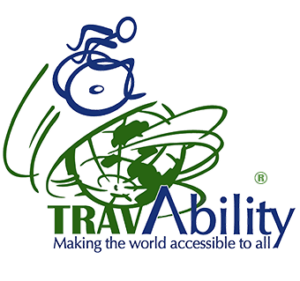What is Accessible Tourism?
All sorts of terms have been used to describe this growing market from Barrier Free Tourism in the United Kingdom, Accessible Tourism in Australia, Access Tourism in New Zealand. All of those terms have their foundations based on the physical term of “access” More often than not those expressions also have a narrow interpretation as people think of them applying only to travelers with a mobility related disability.
More correctly what we are describing in talking about Accessible Tourism is an environment where people of all ages and abilities are felt welcome and wanted as customers and guests.
Market Size
Since 2014 several pieces of research around the world have placed the value of the market at between 14% and 20% of the total tourism spend. The growth rate is tracking at three times the rate of tourism as a whole. It is being fuelled by the aging and retiring baby boomer generation. Most western countries have a very similar age distribution. Research by McKinsey & Company in the US found that the Baby Boomer generation controls 60% of total wealth and 40% of total expenditure and in areas such as hospitality and leisure the spend was 50%. When looking at that population segment, at age 65, 40% of the group has an age-related disability and by age 75 that climbs to 60%. Extrapolating the spending power and the disability statistics the market is worth 25% of the total tourism spend. The retiree market has also changed with the Baby Boomer generation. This generation is very different from the generations that came before it. It was born into optimism and was also adventurous. It was the Baby Boomers who first backpacked their way around the world, first invented adventure tourism and trekking, and lived by their Lonely Planet guides. The sheer size of the generation meant that they always had the market power to demand products that suited their needs, after all, it was this generation that caused Levis Strauss to alter the cut of their jeans to cater for a middle-aged spread when they turned 40. As retirees, that adventurous spirit remains as does the expectation that the tourism industry will develop a range of inspiring products and experiences that suit their expectations and their aging needs.
Over the last ten years, we have also seen major developments in adaptive equipment. Everything from off-road wheelchairs, sit skis, advanced hearing augmentation, visual wayfinding, etc that are opening up new opportunities for people with a disability.
“American adults with disabilities or reduced mobility currently spend an average of $13. 6 billion a year on travel. Creating accessible cruise ships, accessible ship terminals, accessible ground transportation, and accessible tourist destinations is not charity. It is just good business.”
The late Dr Scott Rains. a US expert on Accessible Tourism
Enhance your Utilisation by providing the right information
For many tourism operators, catering to the accessible tourism market is extremely cost effective. Many will already have the physical assets to cater for the market, the missing link is often the detailed information required to allow a potential visitor to make their own informed decisions as to whether a facility or experience is suitable for their needs.
Customers who have specific access needs are part of every tourism “segment”. Their interests are as wide as any other group of people. They may be looking for mountain adventures, concert performances, a seat at the AFL Grand Final, a honeymoon hotel or a business lunch. In business terms, they are simply ‘customers’ but they need good access – otherwise they will choose to go elsewhere. They also travel with family and friends so you could not just be losing one customer but potentially many more. It is about gaining market share.
Key elements are:
- Don’t assume all disabilities are the same
- Don’t hide the information, put it where the rest of the facility information is. Bookings are often made by friends, family or employers. Headings such as “special facilities” or “compliance requirements” are meaningless and demeaning.
- Provide enough detail
- Use photographs of your accessible facilities
- Include people with a disability in your general marketing and imagery
Purpose of this guide
Design that caters for the needs of everyone is formally known as Universal Design or Design for All. Sometimes the smallest things like providing a walking stick holder at your reception desk, making sure planter boxes are not placed below lift call buttons and ensuring bathroom and kitchen taps provide purchase for those with a poor grip, can make a huge difference to the experience of your guests. This guide encourages owners and operators to take a fresh look at their premises from the point of view of someone with a disability. Further, good design for someone with a disability is better design for everyone and will be appreciated by young families with prams and pushers, the elderly and for businessmen with heavy suitcases. The workbook is not a statutory audit checklist, it is designed to be used as a “walkthrough” tool to enable you to collect information on your facilities. It collects the sort of data that is important to a various range of disabilities and will allow people with a disability to make an informed decision as to whether a facility is suitable for them or not.
Most of the data collected with this guide should be available on your web site. The best facilities will remain invisible to your potential customers if they are not promoted. Terms such as “we have an accessible room” is largely meaningless as is the simple use of the “wheelchair” disability symbol. Having a tag line of “call us for accessibility information” is putting potential customers at a disadvantage over other customers searching on the internet and potentially putting your establishment at a competitive disadvantage over your competitors.
The checklist is divided into a number of sections to reflect the diversity of tourism businesses.




Share this entry